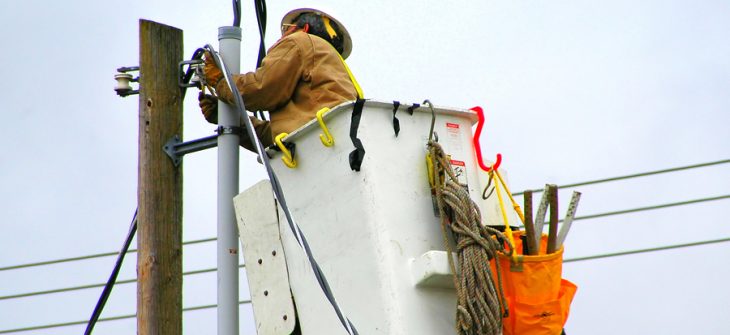October may be famous for its costumes and pumpkins, but here in Florida, it’s also peak hurricane season. As temperatures rise all over the world, extreme weather events are becoming even more powerful and destructive.
Depending on the specific details surrounding a particular tropical storm or hurricane, you may be advised to evacuate the area or seek shelter in the nearest basement or interior room. The National Weather Service and local news or weather broadcasts will provide updates constantly, especially when there is a warning in place.
Of course, in the event of a power outage — a common occurrence with weather conditions like high winds or lightning strikes — TV updates will not be useful to you. Blackouts can last anywhere from a couple hours to several days. While the indefinite nature of that information will bring little comfort, the best way to weather the storm is to plan for it.
Many people will leave their emergency supply buying and packing to the last minute, when evacuation or shelter orders are in (or soon to be in) effect. By the time a storm comes, roads, gas stations, and stores will be crowded and chaotic. The best thing you can do to keep your family safe during a hurricane is plan for emergency scenarios before they happen: now, if you live in Florida. The information below is a guide to blackout preparation for everyone.
Set It Up Before You Need It
If you live in or around Jacksonville, Florida, hurricane season probably does not catch you by surprise each year. But knowing when and how to expect a storm can make it easier to prepare for the problems it may bring with it. One such problem is a power outage (or blackout) that
It’s always most efficient and cost-effective to anticipate a power outage and plan ahead. For instance, if you were to just spend an hour working on your emergency blackout kit, it could save you the future frustration of stumbling around in the dark trying to figure out if you have everything you need. When the weather is unpredictable, it can be helpful to take control of the things you can. Knowing that you are ready for an emergency blackout provides peace of mind.
The Basics of Preparing For a Blackout
This may seem unnecessary to point out, but in the event of a blackout, the first thing you’ll need is a source of light. Your cell phone flashlight can be helpful initially, but since you can’t know exactly how long you’ll be without power, it is wise to limit cell phone use. There are alternative light sources — such as candles and flashlights — that can help you preserve your cell phone battery.
On that note, unless you have charged power banks as backup, it’s best to only use your phone when doing so is absolutely necessary. Save your battery for emergency updates, texts, and phone calls. Power all devices off when they are not in use.
Here are some recommended items to keep on hand:
- Flashlights with extra batteries
- Candles and matches/lighters (use with caution due to risk of fire)
- Drinking water (one gallon per person per day, for at least three days)
- Nonperishable food items
- Manual can opener
- First-aid kit
- Prescription medications
- Wireless radio with extra batteries
In the event that the blackout lasts longer than four hours, you will also have to deal with all the perishable food items in your home. To avoid food waste, leave your fridge and freezer closed for as long as possible. Once the four hour mark is passed, you will need to start worrying about whether or not the food in your fridge is safe to consume. Always eat the food in your refrigerator first, as it will be the first to go bad. As long as the door remains shut, a full freezer will stay cold for about 48 hours; a half full freezer will stay cold for closer to 24 hours.
To prevent members of your family from contracting a foodborne illness — or throwing away their favorite frozen snacks — add the following items to your blackout shopping list: coolers (either disposable or nondisposable is fine), plenty of ice, and a digital thermometer for testing the internal temperature of perishable foods.
More Than the Essentials
For most people, being prepared for a power outage is about merely surviving or getting through one of Mother Nature’s challenges. However, some can afford to “power through” a blackout more comfortably. While it can’t change the weather conditions and may be closer to “glamping” than thriving, the use of a backup generator during a power outage can help minimize the interruptions to your family’s normal life at home.
If you do choose to use an alternative source for electricity, heating, or cooking, please keep in mind that the primary risks associated are electric shock, fire, and carbon monoxide poisoning. It is especially critical that you avoid exposing yourself or your family members to carbon monoxide poisoning, which occurs silently and can be fatal. To ensure your family’s safety, always use your generator (or other gasoline, propane, natural gas, or charcoal-burning devices, such as grills or camp stoves) outside and away from your home.
There are many different kinds of generator on the market, and what you use is dependent on your needs and preferences. Here are some good options:
- Portable Generators
- Natural Gas Generators
- Standby Generators
- Inverter Generators
- Gasoline Generators
- Diesel Generators
- Solar Generators
- Hydrogen Generators
Whatever you have or choose to buy in preparation for peak hurricane season, make sure you also have extra fuel or whatever you need to keep your generator running. Want to be sure the house is safe? Double check that you have properly working carbon monoxide detectors installed.
While the effects of hurricane season are unavoidable throughout the state of Florida, there are still many things you can control in the face of extreme weather. An emergency blackout kit is a simple way to be prepared as those storms roll in.

